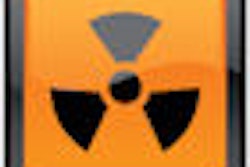Tuesday, December 1 | 11:30 a.m.-11:40 a.m. | SSG19-07 | Room S404AB
Wide variations were found in the dose levels for five common CT-guided interventional procedures, prompting researchers at Mayo Clinic in Rochester, MN, to adopt a comprehensive program of dose reduction strategies.The study assessed typical radiation dose levels in patients undergoing CT-guided interventional procedures -- and took steps to reduce them. Shuai Leng, Ph.D., and his colleagues examined nearly 600 patients undergoing the most common CT-guided interventional procedures. They recorded scan parameters, dose levels and the number of scans for ablation, aspiration, biopsy, drainage, and injection. Skin doses were estimated from the recorded volume CT dose index.
"We have determined radiation dose levels for each type of procedure, and found out that even the highest-dose CT scans, which are clinically providing a new standard of care, are well below skin injury levels," Leng told AuntMinnie.com.
The maximum skin dose was 1.95 Gy, with only 1.4% of patients receiving skin dose exceeding 1 Gy. The mean effective dose across all procedure types was 24.1 ± 32.4 mSv (range, 0.8-251.4 mSv).
"Ablation is the highest dose and we have implemented a significant dose reduction in ablation procedures by lowering the mAs for the CT scans monitoring the tumor," Leng said. The practice uses an intermittent biopsy mode to lower patient dose during interventional procedures, with helical scanning reserved for localization and final checkup.
The study data provided benchmark values to use in the implementation of various dose-reduction approaches ranging from decreasing the tube current to the use of complex highly constrained back projection (HYPR) algorithms, which have reduced doses by a factor of two, Leng said.




















